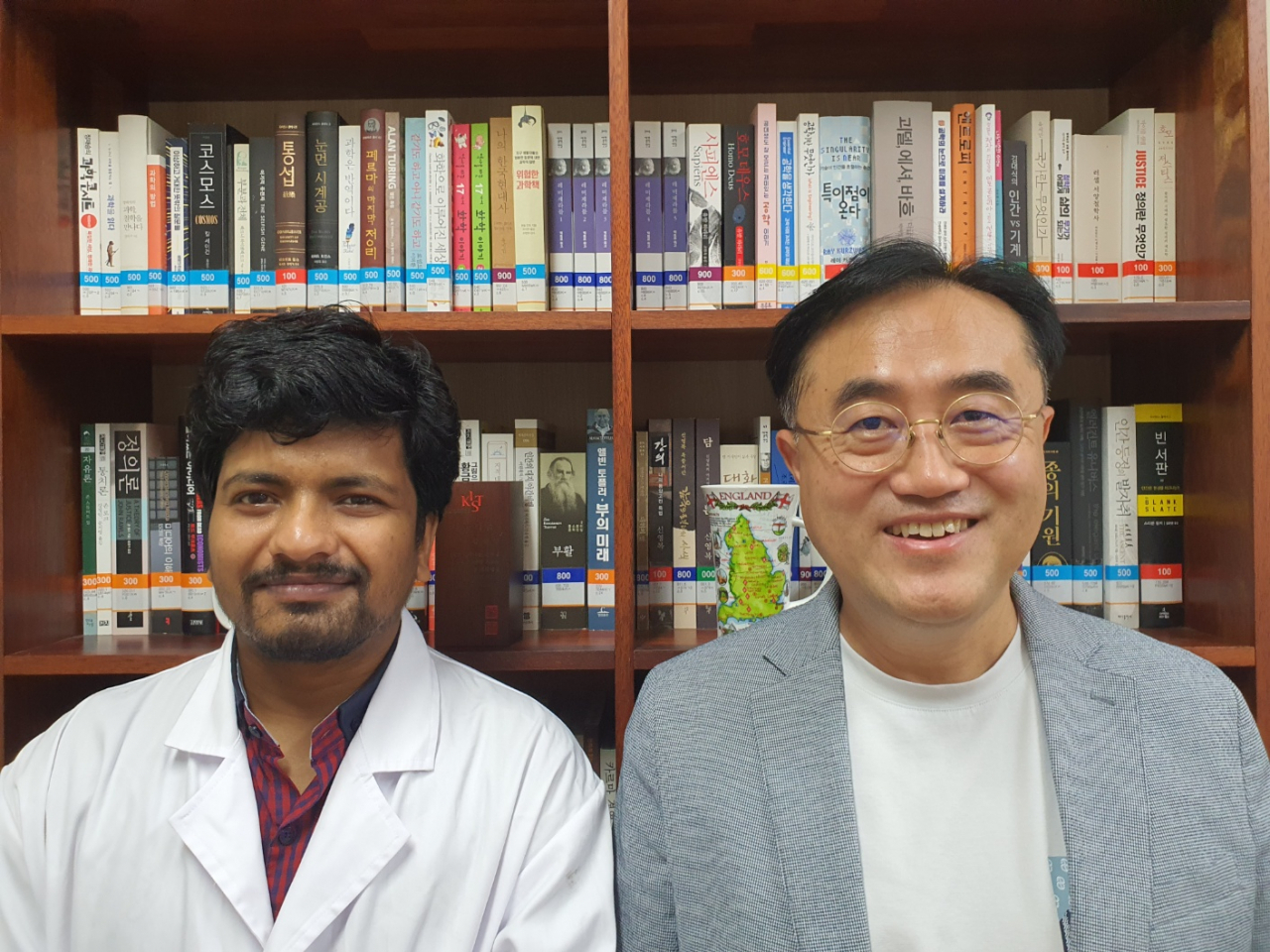News
‘Creating graphene for useful capacitors from harmful cigarette smoke’
Professor Myung Jong Kim's team in the Department of Chemistry is attracting attention by developing a method of producing graphene for useful capacitors using aerosol, a toxic substance in cigarette smoke.
The results of this research were published in the September issue of the renowned international academic journal 'Composite Part B (JCR: Top 0.8%, IF: 13.1)' through joint research by Professor Myung Jong Kim's team and Professor Nayak's team at the Indian Institute of Technology (IIT).
Chandan Kumar Maity, a postdoctoral researcher at Gachon University, was named as the first author, and Professor Myung Jong Kim and Professor Ganesh Shandra Nayak were named as corresponding authors. The title of the paper is ‘Aerosol derived carbon dots decorated boron nitride supported Zn-doped MoS2 for high performing flexible asymmetric supercapacitor’.
The research team conducted research with the goal of developing supercapacitor materials (components that act as chargers in electronic circuits) that have high added value, are cost-effective, and have high energy density from these toxic pollutants.
Professor Myung Jong Kim said, “As a result of this research, we expect to be able to manufacture inexpensive energy storage devices using metal-carbon based electrodes while solving the two major problems of cigarette smoke toxicity and pollution.” He added, “The developed technology will be used in automobiles and “It has high usability, as it can also be applied to the electronics industry.”
The results of this research were published in the September issue of the renowned international academic journal 'Composite Part B (JCR: Top 0.8%, IF: 13.1)' through joint research by Professor Myung Jong Kim's team and Professor Nayak's team at the Indian Institute of Technology (IIT).
Chandan Kumar Maity, a postdoctoral researcher at Gachon University, was named as the first author, and Professor Myung Jong Kim and Professor Ganesh Shandra Nayak were named as corresponding authors. The title of the paper is ‘Aerosol derived carbon dots decorated boron nitride supported Zn-doped MoS2 for high performing flexible asymmetric supercapacitor’.
The research team conducted research with the goal of developing supercapacitor materials (components that act as chargers in electronic circuits) that have high added value, are cost-effective, and have high energy density from these toxic pollutants.
Professor Myung Jong Kim said, “As a result of this research, we expect to be able to manufacture inexpensive energy storage devices using metal-carbon based electrodes while solving the two major problems of cigarette smoke toxicity and pollution.” He added, “The developed technology will be used in automobiles and “It has high usability, as it can also be applied to the electronics industry.”
Gas barrier Graphene with blocking pores.
The research team of Professor Myung Jong Kim in Department of Chemistry developed a technology of filling the nanopores while maintaining the unique characteristics of graphene by utilizing the self-aligning behavior of organic materials on the graphene surface, through cooperative research with the research team of Dr. Seok-Hoon Ahn in Korea Institute of Science and Technology, and the research team of Professor Young-Jong Kang in Hanyang University.
In order to cover the nanopores of graphene with aligned organic molecules, the research team of Professor Myung Jong Kim utilized the behavior of organic materials with long chain structure that align well with each other at the molecular level on the surface of graphene, thereby creating nanopores that function as a passageway for gas molecules. By controlling the thickness of aligned organic material at nanometer level, the gas barrier property was significantly improved. In addition, the moisture permeability was decreased to 1/100, while the intrinsic transparency and flexibility of graphene has remained the same. -Nano Letters 22, 286-293 (2022)
In order to cover the nanopores of graphene with aligned organic molecules, the research team of Professor Myung Jong Kim utilized the behavior of organic materials with long chain structure that align well with each other at the molecular level on the surface of graphene, thereby creating nanopores that function as a passageway for gas molecules. By controlling the thickness of aligned organic material at nanometer level, the gas barrier property was significantly improved. In addition, the moisture permeability was decreased to 1/100, while the intrinsic transparency and flexibility of graphene has remained the same. -Nano Letters 22, 286-293 (2022)
A facile method to synthesize white graphene

The research team of Professor Myung Jong Kim in Korea Institute of Science and Technology developed a technology of synthesizing high-crystalline white graphene (h-BN) by dropping a polymer (borazine oligomer) onto the nickel catalyst substrate, followed by spin-coating process and heat treatment at 1000 °C.
According to the research team, the newly developed method is very simple compared to the conventional chemical vapor deposition (CVD) method, which requires borazine as a raw material. In addition, the new method can be proceeded by using only low-cost devices.
Professor Myung Jong Kim mentioned, "The key point of the study is to find out the mechanism of obtaining white graphene with high integrity at relatively low temperature by the effect of the catalyst. By applying the white graphene as a support layer on the insulating layer in graphene transistor, the doping effect of the graphene material is reduced, and the charge mobility related to the operating speed of the transistor is doubled."
According to the research team, the newly developed method is very simple compared to the conventional chemical vapor deposition (CVD) method, which requires borazine as a raw material. In addition, the new method can be proceeded by using only low-cost devices.
Professor Myung Jong Kim mentioned, "The key point of the study is to find out the mechanism of obtaining white graphene with high integrity at relatively low temperature by the effect of the catalyst. By applying the white graphene as a support layer on the insulating layer in graphene transistor, the doping effect of the graphene material is reduced, and the charge mobility related to the operating speed of the transistor is doubled."






